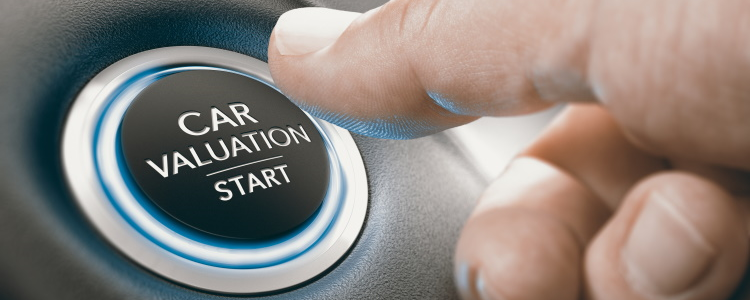It’s unusual that a dealer can give you a trade-in offer just by glancing at your car. Dealerships take into account many factors to create a trade-in offer that best fits your vehicle and its condition. We cover what many dealers check out before giving you an offer, and some tips on increasing how much you could get for your trade-in.
Out With the Old and In With the New
 Trade-ins are a very common way that car buyers lower the price of their next vehicle. Trade-ins with equity can serve as a down payment that lowers the amount you need to finance. They can also help with meeting the down payment requirement that many bad credit auto lenders have.
Trade-ins are a very common way that car buyers lower the price of their next vehicle. Trade-ins with equity can serve as a down payment that lowers the amount you need to finance. They can also help with meeting the down payment requirement that many bad credit auto lenders have.
However, trade-in offers can vary greatly, and your car’s condition is one of the biggest factors. While valuation websites can give you an idea, the dealership is the one that determines the actual cash value (ACV) of your vehicle.
It’s not as easy as looking up your car’s going price online, though – dealers typically look closer.
How Dealers Determine a Trade-In’s Value
When you bring your trade-in to a dealership, it’s going to be thoroughly looked at so it can be appraised. This means looking at your vehicle’s cosmetic and mechanical condition, and its overall desirability.
To do this, dealers typically use a checklist called a “used car appraisal” form or a “reconditioning checklist.” They usually note things like your vehicle’s features and add-ons, such as alarm systems, backup camera, stereo systems, and more. Generally, the more bells and whistles your car has (that work!), the higher your trade-in offer could be.
The dealership also notes your vehicle’s mileage, any cosmetic damage, and they may ask about the car’s history and service records too. Your vehicle’s overall desirability is taken into account, as well, since some makes and models sell faster than others. For example, Subaru models typically have really high resale values and are highly sought after.
Besides the features, the dealer notes anything that has wear and tear, and these all come with a price. They note anything that needs fixing and start to add up the cost of getting your trade-in ready to sell. Most dealerships take trade-ins to be reconditioned and sold. After the estimated cost of prepping your car to be sold is estimated, they compare it to the trade-in’s value to give you an offer.
Auto Credit Express Tips: Timing is also important and can make a big impact on your overall trade-in offer. For example, if you have a convertible and you try to sell it to a dealer in the winter, you may not get the highest offer. Some dealerships may consider a convertible in the winter a bad investment, because it’s likely to just take up room on their lot until the weather gets warmer. Consider when your vehicle may be most valuable! Your SUV may be more valuable than a convertible to a dealer in the cold seasons.
Test Driving Your Trade-In
The dealership is likely to take your trade-in for a spin, and may give you an estimated trade-in value before and after the test drive. This test drive isn't a joy ride – it’s about learning how your car handles overall, and listening for any potential problems.
This is a great way for the dealer to test the infotainment system, tires, alignment, and brakes, among other things. Since dealerships are usually on alert for issues during a test drive, neglecting to tell them about a problem isn’t likely to work in your favor.
They’re likely to find any “hidden” issues, so be honest about your vehicle’s condition right away so your offer isn’t bouncing around. The dealer may give you an estimated trade-in value before the test drive, and lower the offer after the test drive if an issue arises.
Valuation Websites and Your Vehicle’s Value
Valuation websites can be great resources for borrowers and dealerships alike. Remember, they can only give an educated guess on your car’s value, but these sites are great resources.
Dealers use websites like Black Book, NADAguides, and Kelley Blue Book to get an idea of what your trade-in could sell for. However, these websites give value estimates for vehicles that don’t need any work done, so the online value may not completely match a dealership’s trade-in offer.
Although these values may not be on the nose every time, it’s still beneficial for you to look up your car’s estimated value before you head to the dealer so you can have some bargaining power. If you have an idea of what your vehicle is worth, you can gain negotiating leverage when the time comes.
These sites are also useful for seeing what your future car is selling for. Check out these sites for both your trade-in and your next vehicle for a leg up on the negotiating table. An informed buyer is a smart buyer – so do some research before you head out because it could lead to a better deal!
Call Around to Multiple Dealerships
Since most dealerships can take trade-ins, it’s worth it to call around to multiple dealers before you decide on an offer. Not only can you opt to choose the highest offer, but you can also get a better idea of what your car’s ACV is. Trade-in offers are typically good for around two weeks, so take advantage of this shopping window!
It’s also recommended that you take your vehicle to at least one franchised dealership that sells your car’s make, since they may be able to offer you more than an independent location.
Finding the Right Dealership for Your Trade-In
Trade-ins can be a great way to meet a down payment requirement that many bad credit auto lenders have, lower the price of your next vehicle, and lower your monthly car payment. While most dealers can take trade-ins, it’s also important to choose a dealership that can work with your credit score. We know which ones help bad credit borrowers, though, right here at Auto Credit Express.
We’ve created a nationwide network of dealers that are signed up with bad credit resources. To get matched to a dealership that can work with poor credit, fill out our free auto loan request form.
















